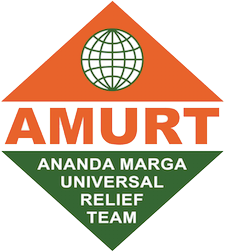Gespeichert von Manohar am/um
Kenya has become increasingly drought prone in the last several decades. As 80% of its land is covered by arid and semi-arid territory, millions of people and the animals they rely upon become endangered when a particularly dry season comes along. The current drought has persisted since late 2010, and was declared a disaster by the President of Kenya on May 30, 2011. AMURT has teams on the ground in Kenya identifying the direst situations and ramping up a response that will nourish the neediest while enlisting the leadership of community members to prevent future disasters through sustainable planning.
Initial Response
AMURT’s efforts are based in the Samburu East District of the Rift Valley Province. The initial response focuses on the distribution of emergency supplementary food supplies to vulnerable groups like mothers and young children and providing free medical care to all. This is being done in collaboration with the local chiefs, the government and the Samburu East Women’s Empowerment Forum, a women’s organization represented in every part of Samburu East District. Samburu women are traditionally responsible for maintaining homes, raising children, and gathering food and water — they will serve an essential role in all phases of AMURT’s relief effort.
-
Vulnerable groups are receiving monthly supplementary food supplies of Unimix (a fortified food cereal), beans, cooking oil and salt.
-
In partnership with community health workers, AMURT has created mobile clinics to service the hard to reach and most affected by the drought.
Food and Water Security
Since January, food prices in the region have nearly doubled, and staple food items like maize, beans, cooking fat and sugar have become extremely scarce due to stockpiling and illegal export. Malnutrition has become commonplace, especially with young children, who require food supplements designed to bring their bodies back to a normal condition and growth rate.
Three consecutive years of drought have dried up many water sources, and people are often forced to walk up to 20 kilometers to the nearest water point. Some hard hit areas require water to be transported in by tanker. Another issue is that most existing water points can become easily contaminated when overused.
Loss of Livestock
The loss of more than 8.7 million livestock has eliminated more than kshs 84.2 billion (nearly $900 million) of value and robbed many families of their livelihood. According to the Livestock Development Permanent Secretary the worst hit are cattle of which 3.5 million have been reported dead due to lack of water and pasture, followed by 2.7 million goats and 2.5 million sheep. Those that remain are skinny and affected by drought-induced disease, lowering their value.
Disease and Health Issues
Sanitation has been an issue in Samburu District, where several cases of cholera have been reported. Our team have seen ad treated dysentery cases, trachoma, diarrhea, whooping cough and upper respiratory tract infections. A large number of those interviewed during AMURT’s assessment reported other symptoms such as headaches, fatigue, and dizziness, which might be induced by drought-related stress.
Future Plans
AMURT intends to reduce the effects of future droughts by protecting and enhancing water sources as well as supporting new innovative livelihood schemes.
